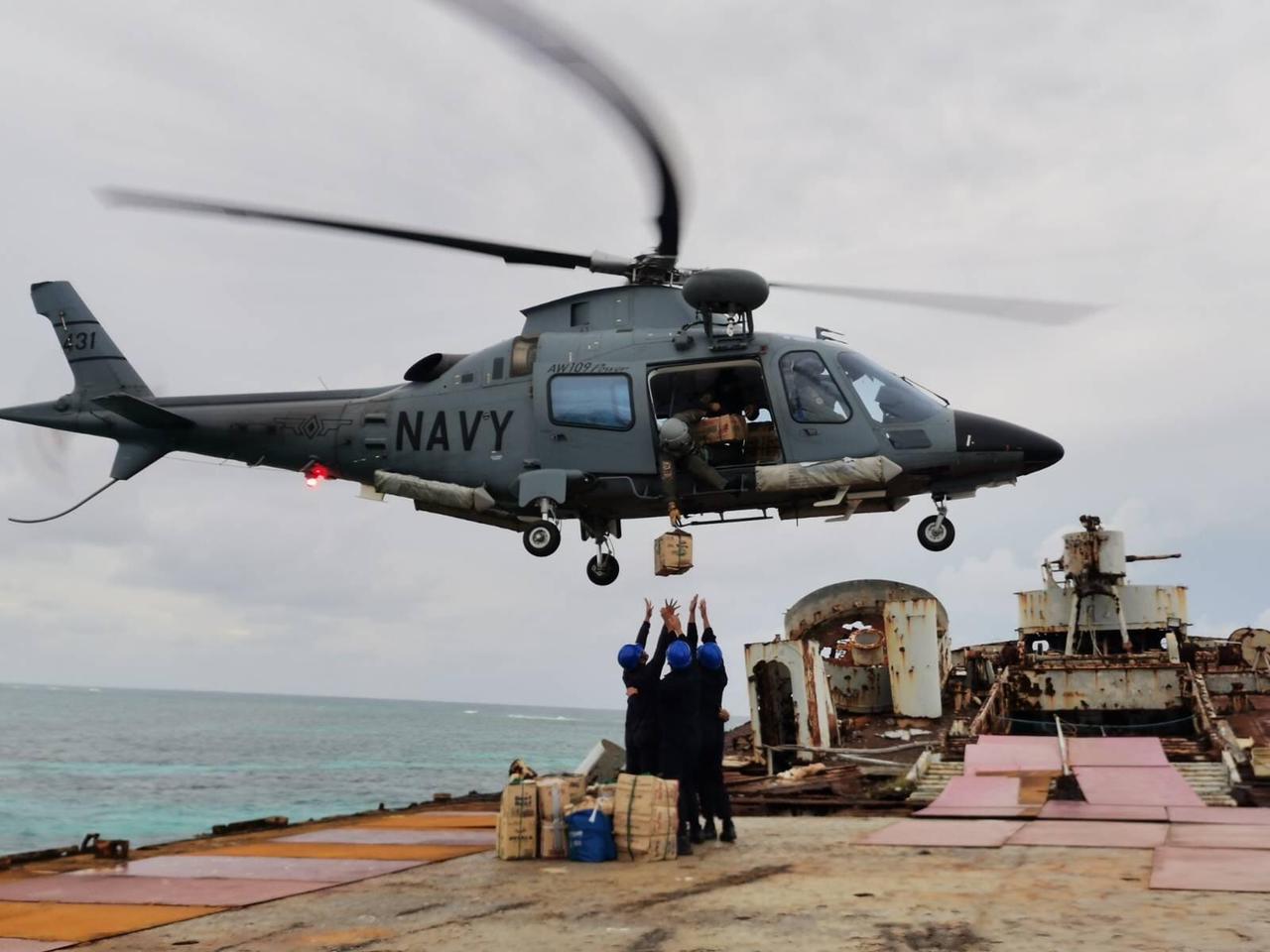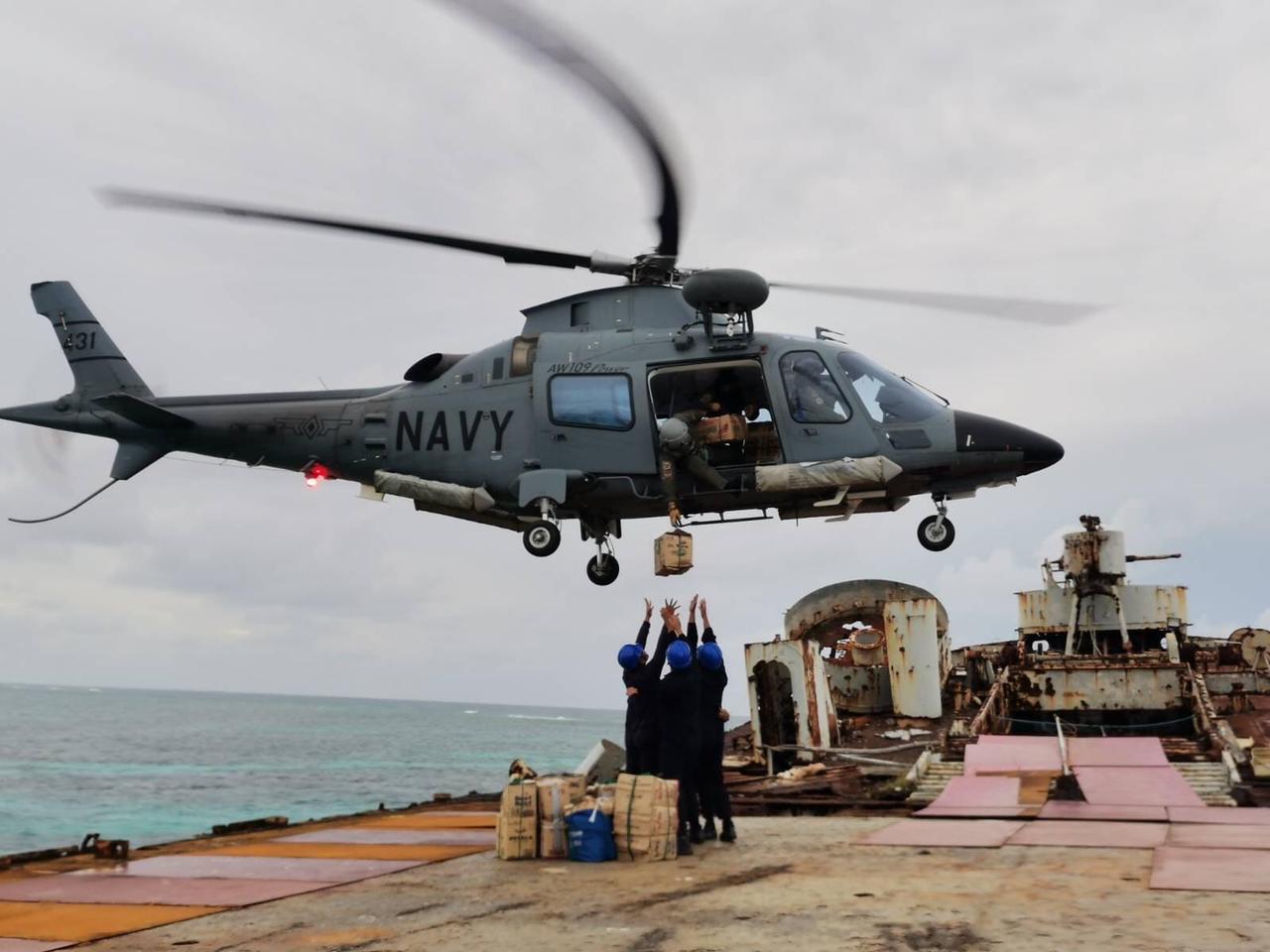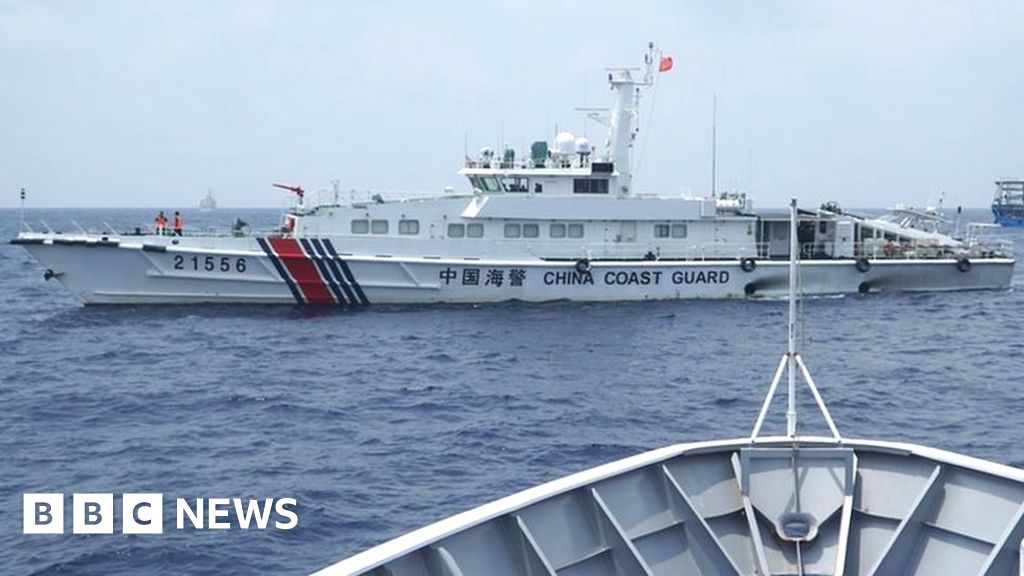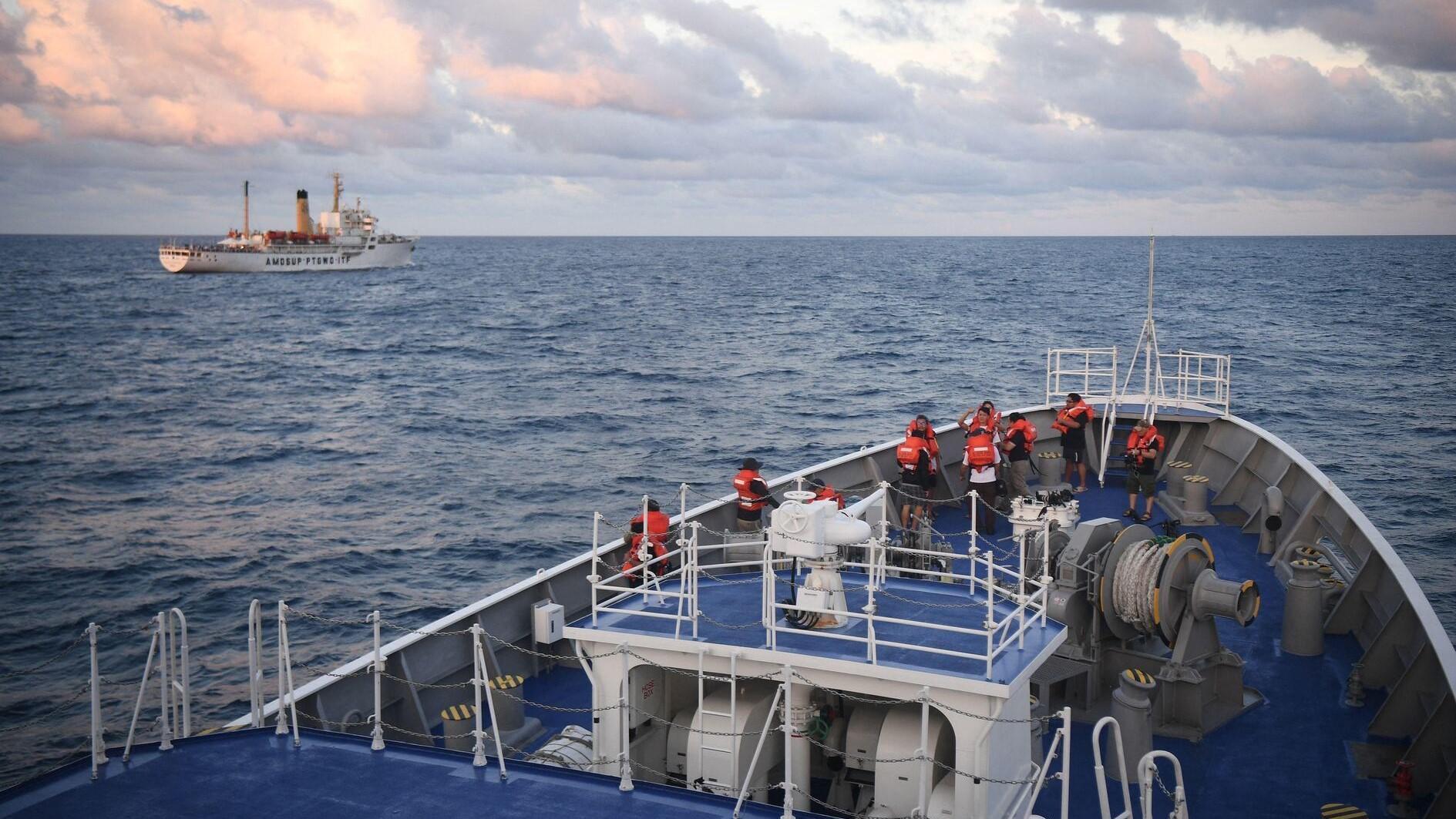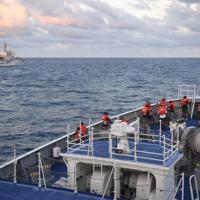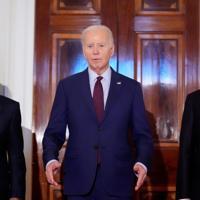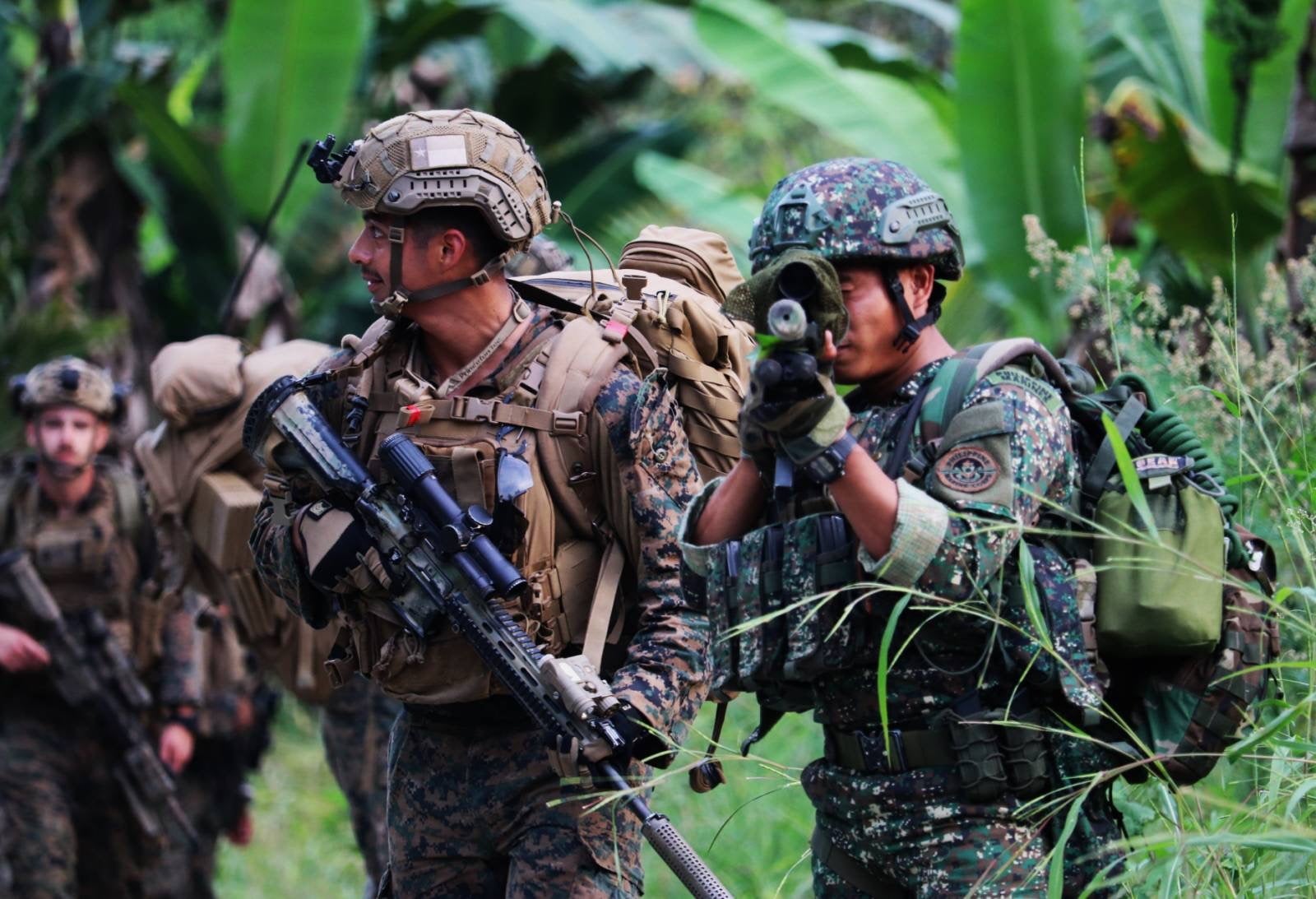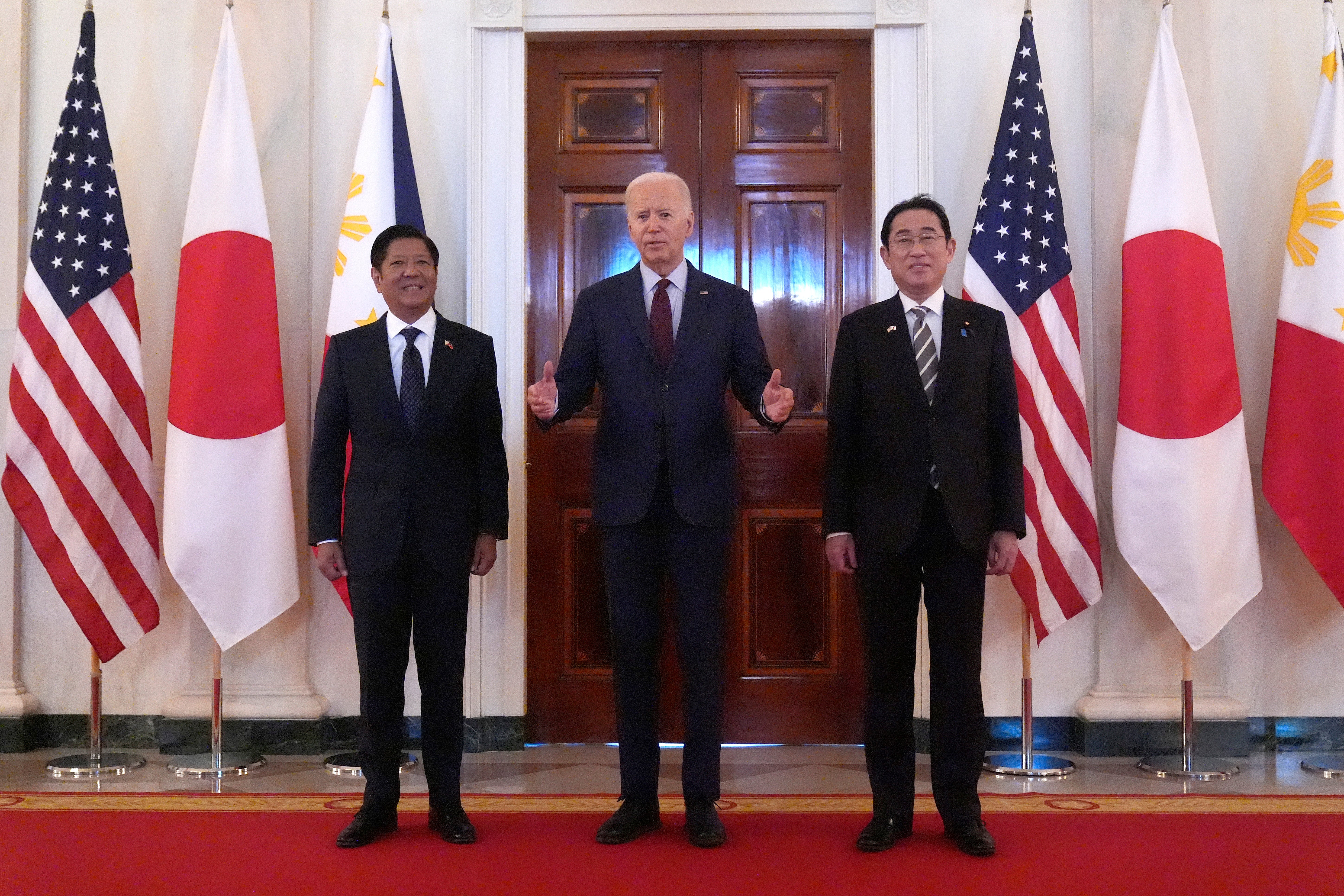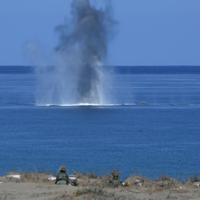Interesting view from ret. Adm. Cem Gürdeniz on the future role of Philippines. Where AFP is expected to provoke China and divert its attention from Taiwan.
Translation
ORIGINAL FACADE FOR THE USA WEST PACIFIC
While the USA experienced a serious decline in the terrestrial front against Russia in the Ukrainian War, it fell into a geopolitical trap that Israel never wanted with the order due to the Gaza War. The US, which has no choice but to drag Israel's pressures and new orders on the intervention against Iran in the election year, almost to apologise to Iran in the recent Iraq and Syria attacks, continues to be the Pacific Front, despite all the developments in the west of Eurasia. While the USA is preparing for a very difficult conflict period against China to get results in the 34 trillion dollar debt stock, it encounters serious challenges in itself. Stopping China's rise in industry and trade with its departure from the continent to the sea continues to be the biggest target of the hegemony of the last 79 years. However, on the Pacific front and against China, the USA's job is very difficult compared to the European and Middle East fronts. This region is a big sea front. The distances are too far. The majority of US allies are island or archipelago states such as Japan, Australia, Philippines. In other words, they need support from the sea. Sea routes must be kept open for both energy and food imports and military equipment and ammunition. For this, the navies of the US and Indo/Pacific allies need to be kept very strong against the Russian, China and North Korean navies in quality and quantity. However, the situation is not encouraging for today. The balance of force is incomparably against the US and its allies to 80 years ago. The US, for example, had 6000 warships and auxiliary ships at the end of World War II, where it completely put the Pacific Ocean under its sovereignty and cleared from the Japanese. Today this number is 290. It is very difficult to reach the speed of its rival China to build warships and merchant ships. In the words of the American Secretary of the Navy, the USA can only make the number of ships built by China in a year in 7 years.
THE US IS LOOKING FOR CHEAP BLOOD
On the other hand, the USA could sacrifice thousands of young people in battlefields for the sake of their geopolitical interests in the Second World War and did not give an account to the public. Today, it is very difficult to find soldiers to die for imperialist ambitions in the USA and to digest these deaths to the public. That's why the USA today uses legionnaire mercenary companies for military operations in every crisis area. On the other hand, they are looking for the cheap blood of other states that will be poured in their name in every crisis and war. In 2022, Ukraine provided this opportunity. While making NATO and the EU fully dependent on the European front, they caused Russia to lose blood at the expense of the deaths of 100 thousands of Ukrainian young people, even though they could not get a strategic result. Now the search for a new Ukraine on the Indian/Pacific front continues. We can say that it would be very difficult for Taiwan to be Ukraine. Because while the average development and income levels are incomparably higher than Ukraine, they are aware that they are an island state and cannot withstand a Chinese blockade for a long time, but most importantly, their racists with the same blood will not kill each other for Anglo-Saxon imperialism. Most importantly, they see what is happening in Ukraine, despite bordering a continental state and two loyal US allies such as Poland and Romania. On the other hand, they remember the blockade of the Chinese Navy and the violation of the ADIZ field with hundreds of aircraft by the Air Force during the visit of US Congressional President Ms. Pelosi to Taiwan in the summer of 2022. Shortly after the Taiwan Elections held last month, US President Biden's statement that we do not support Taiwan's independence movements reveals the synthesis created by this situation.
BIGGEST CHEAP BLOOD CANDIDATE, PHILIPPINES
On the other hand, especially in parallel with the developments in the last 6 months, the country where the USA has given clues that it can design to use it with cheap blood in the region is the Philippines. This state, especially thanks to Ferdinand Marcos Jr., who came to power after the 2022 elections, has completely entered the US route, unlike the previous President Duterte, allows this evaluation. The Philippines, which has a population of 100 million, consisting of 7641 islands, is named after the Spanish King Philip. The Spanish Navy, which occupied the archipelago where Manila was located in 1543, gave the name of its kings. The USA took and colonised the Philippines from the Spairds with Admiral Dewey's fleet in 1898. The Philippines, which struggled to fight for independence between 1899 and 1901, lost 1.5 million people and surrendered in the face of the US invading firepower. Thus, the USA established its largest forward stronghold in the Pacific. The country, which was occupied by Japan in World War II, could not protect the famous US General Mac Arthur and withdrew, saying, "I Shall Return." 57 thousand soldiers and nearly 1 million Filipinos died in the Japanese invasion. At the end of the war, the American Navy cleared the entire Pacific from the Japanese, and Mac Arthur returned to the island on October 20, 1944. In 1946, he recognised the independence of this country. Since then, the Philippines has been the most important ally and forward base of the US in the Western Pacific. The Philippines has been an important actor in the Pacific Ocean Edge Belt geopolitics in the Soviet siege in the Cold War. Today, after Australia, Japan, Singapore and South Korea, they are the most important ally of the USA in the region. The Bilateral Defence Agreement (MDA), signed in 1951, gave the USA the opportunity to base in the Philippines. The Philippines, which participated in the Korean War with combat troops next to the USA, also participated in the Vietnam War with support units. In the Cold War, the large-scale Subic Bay, (Sea) and Clark, (Air) Bases were extensively used in a location that would besiege China and Vietnam on the Shanghai-Taiwan axis and control the South China Sea. Under the Bilateral Defence Agreement (MDA), many advanced bases and facilities were given to the U.S. order, except for the two major main bases. The USA, which closed both bases when the Cold War ended, returned to these bases when the period of competition of the great powers began. In 2014, an EDCA-Advanced Defence Cooperation Agreement was signed between the two countries. The way for the pre-deployment of jet fuel and ammo was opened at 5 Philippine bases designated under EDCA. Let's add an important development this week. For the first time in its history, the Philippines decided to supply submarines. As a result of the US guidance, they started the tender process to establish a submarine fleet.
SEA LIMITATION AND SOVEREIGNTY PROBLEMS
Today, the most important means of provoking the Philippines against China is focussing on maritime demartation and sovereignty issues. In the South China Sea, China has a problem with maritime jurisdictions. Apart from the Exclusive Economic Zone declared by both countries, there are disputed Spratly Islands, Mischief Cliffs and Scarborough Shallower problems with Kardak-like sovereignty. At the beginning of 1996, both navies entered a short-term conflict for the Spratly Islands and the Mischief Cliffs. In 1999, the Philippines was bought with the help of the American Tank Landing Ship Sierra Madre near Nansha Island (2. Thomas Shallow) claimed the rights in the region by landing the Renai Reef, Ayungin. Since then, the tension between the two countries has continued through the ship in question. Filipino personnel remain on board and continue to practice state in shallowness.
ARBITRATION COURT DECISION AGAINST CHINA
Also in the Spratly region, there was a new crisis in the spring of 2012 due to Chinese fishermen. The Philippines unilaterally filed a lawsuit against China at the International Permanent Court (PCA) on January 22, 2013 and won the case in 2016. On paper, the court did not recognise China's 9-point maritime authority border. However, the Philippines did not get any results because the court did not have the power to sanction. On October 26, 2015, this time the U.S. crossed a destroyer from this critical region using the right to freedom of navigation (FON) and was violently protested by China. While the US repeated this move in 2018, the Chinese Warship almost entered the flashcourse with the American destroyer and the accident was prevented at the last moment. Upon this incident, US President Trump said, "XI Jingpin is no longer my friend."
ECONOMIC CHANGE IN THE PHILIPPINES
In 2020, tensions against China in the region increased a lot for both Vietnam and the Philippines.In 2021, 200 Chinese fishing boats showed sovereignty within the Philippines' MEB. On the other hand, the USA used these moves of China to develop strategic partnership relations with the Philippines. As a matter of fact, on February 4, 2023, the new President of the Philippines, Ferdinand Marcos Jr., approved the expansion of American bases in the country and the double in number and 9. There are currently 8 Naval squares and facilities belonging to the US, and 18 Air Force and Land Aviation use, as a large and small base and auxiliary facility.
STATE Practises OF THE PHILIPPINES
In August 2023, there were pressuring water squeezes between Chinese Coast Guard ships in disputed areas and the elements that supported the Sierra Madre ship in particular. Until that day, China allowed food and health support from the sea to the inhabitants of this ship. However, the situation toughened when the Philippines side tried to send technical support and supplies to the ship, which is being scrapped this time. China did not allow this and demanded that the ship be removed. The Philippines gave a rejection to China. As these events continue, on December 4, 2023, the American Warship USS Gabrielle Giffords illegally entered the waters near the Ren'ai Reef, where the Sierra Madre is located. According to the Philippines, these waters were theirs. But for China, it was its own territory of sovereignty, and this created a very serious crisis not only with the US but also with the Philippines. In the same time period, the U.S. made a statement that it confirmed once again that an armed attack on Philippine public ships, planes and armed forces, including Coast Guard forces in the South China Sea, would activate the 1951 US-Philippines Mutual Defence Agreement.
INCREASED TANSION IN THE NEW YEAR
As we approach 2024, numerous frictions with Chinese Coast Guard ships and Philippine ships in the Ren'ai Reef zone…
